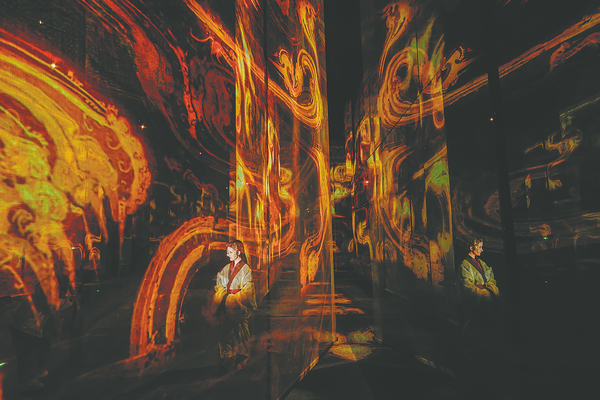

The exhibition, opened on June 8 and running until next February, uses technologies such as naked-eye 3D and holographic projections to offer an immersive experience and a visual feast inspired by artifacts found in the tomb of the Marquis Dai's wife, Xin Zhui, whose un-mummified body was so well-preserved that medical experts were able to perform a full checkup, gynecological examination and autopsy. Many exquisite items, such as embroidered silk, lacquerware, musical instruments and wooden figures, were also unearthed from the tomb.
The digital exhibition features patterns and art designs inspired by Xin Zhui's tomb, but does not display any actual relics. In three years, the museum has created about 1,800 3D digital models of the artifacts and taken nearly 60,000 photos of the relics.
The exhibition consists of three sections. Space and Time features a digital layout of Xin Zhui's tomb, a central coffin chamber surrounded by four compartments and all the items buried in her tomb; Ying and Yang focuses on the imaginative patterns painted on the four nested lacquer coffins; and the Life section re-creates the painting depicted on a T-shaped silk banner laid on the surface of the innermost coffin.
"I think it's an exploration for a museum's future archaeological exhibitions. Transforming from viewing real relics to an immersive, theatrical and virtual experience, digital exhibitions can break the boundaries of time and space," Duan says. "It's easy for such exhibitions to tour across the world."
The exhibition took three years to prepare and is co-organized with the Digital Library of China and US' Massachusetts-based Harvard FAS CAMlab, an art team established by Eugene Y. Wang, an art professor at Harvard University.
"Life is a question that humanity has been pondering for thousands of years. The Han Dynasty (206 BC-AD 220) people's concept of the cosmos and life, to some extent, are from the same perspective as those in the 21st century," says Wang, explaining why they chose "life" as the theme of the show.